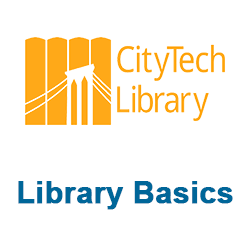It’s been said that librarians appreciate OER (Open Educational Resources) more than anyone else. This may be only partly true, but it is easier to see the opportunities offered by OER when viewed in the context of copyright laws. Let’s take a closer look!
Traditional Copyright

You might not know that – from the moment your pen hits the paper! – your work is legally protected under copyright.
This means that as a creator, you have many legal rights by default – which is great!
Traditional copyright starts to feel more restrictive when you create something that you would like to be shared or distributed to others. If a work was created with the intention of being shared, traditional copyright may not be the best fit: users would have to ask the author for permission to use the work in every instance.
There is also always the option of using materials for educational or other non-commercial purposes, under Fair Use. As the US Copyright Office explains, “Fair use is a legal doctrine that promotes freedom of expression by permitting the unlicensed use of copyright-protected works in certain circumstances.” However, because there are limitations and ambiguity in determining Fair Use, it’s much easier if the work was originally distributed under a more open license.
“Open” Licensing and Creative Commons

By “open license,” we typically mean a Creative Commons license.
These are designed to help creators extend rights to other users. For example, by attaching a Creative Commons license to your work, you can indicate to others that it is only meant to be used non-commercially (NC), or make sure the content is only re-distributed “as is,” without any changes (ND, indicating “no-derivatives”).
If you like, you can also use the license to allow users the right to “remix” the content – i.e., take your work, change it, and re-distribute it to others. These licenses are considered the most “open,” because they give users the most flexibility to use the work.

The Creative Commons licenses look like this image to the left: there are different variations depending on the license.
We’ll take a closer look at those icons in a future post!
Unwind with a great graphic novel!
 We know it’s a tough time of the semester. Treat yourself and borrow one of our graphic novels.
We know it’s a tough time of the semester. Treat yourself and borrow one of our graphic novels.
For May 2018, we’ve put together some of our very best graphic novels on our monthly book display. The books range from biographical graphic novels like Peter Bagge’s Fire! The Zora Neal Hurston Story to Emil Ferris’s highly praised My Favorite Thing is Monsters.
After you’ve checked out our book display, come explore our fantastic, large graphic novel collection under the library staircase.
Communication is key – Update from Instructional Design Intern

Good evening! Today I focused on two tasks for my projects. First, I talked with Amanda Belantara, adjunct reference and instruction librarian, about our orientation site. We are skipping the card sort for now due to a lack of time, but the intern in the fall may conduct some kind of user test on the website we build. Amanda has been focusing on creating an accordion menu for library services, which is looking great so far! We’re also thinking about the theme for our orientation site. Accessibility is key in our choice, but we also hope we can avoid sacrificing aesthetic. Right now we’re working on finding a balance between those features in WordPress.
The second task that I worked on today is our user test analysis. We wrapped up our user tests a couple of weeks ago, and we’ve been moving toward analyzing our data. We have qualitative information we want to record as well as more quantitative factors, like the number of times students had certain problems. I had a bit of a miscommunication situation and spent a lot of time working on transcriptions that were unnecessary. However, next week I’m going to hit the ground running on the broader trends we’re seeing instead of focusing so closely on the exact words used.
Have a great week!
OER: Everything but the Textbook
We tend to hear a lot about finding textbooks that qualify as Open Educational Resources (OER). But many other materials also fall under the OER umbrella, such as syllabai, lesson plans, lecture notes, interactive modules, and even whole data sets.
Open Courses
Some institutions are making it possible for outside learners to access educational materials. Massachusetts Institute of Technology (MIT) introduced OpenCourseWare in 2001; the site now hosts materials from over 2400 courses taught at MIT, with an estimated total 300 million visitors.

This means that you can find readings, and supplemental materials across many disciplines at MIT – Geology, History, Ethics, and more. The section OCW Scholar is specifically designed for those pursuing
Independent Study, and includes full video lectures along with course readings. Also check out OCW Educator for suggestions of how their openly-licensed materials might be used.
Exploring the Wide World of Open Content
If you’re looking for something specific, you can use one of the OER repositories to search by item type, across many different institutions.
For example, the OER Commons links to Syllabi from various universities. This could be a great tool for generating ideas on how to teach a course, and instructors could potentially adopt key assignments or readings.

It’s also possible to also search by categories like Game, Data Set, Unit of Study, and others.
If you’d like to search for other open courses, you can use this tool to look for them by subject or topic.
Questions about finding OER? Feel free to reach out to Prof. Cailean Cooney, OER Coordinator at ccooney@citytech.cuny.edu
Man at the Mic

Dr. Klitgord standing at the mic surrounded by a crowd of what appears to be students. While they all appear to be looking at something out of view, ones eyes can not help, but focus on something else. Standing out from the rest of the picture is Dr. Klitgord himself encircled by a white glow of some sort of whitener (liquid paper perhaps?).
This, coupled with the great composition of the shot, makes it difficult to look away and especially not notice him.
What was the event?
Where was this shot?
What were they all looking at?
Maybe they were all trying to see how long they could go before looking back at the person with the white glow.
The use of the whitener and rule of thirds to highlight and align the elements of the photo really helped it stand out among the rest in its archive folder. Looking through the gallery this photo was a part of, you too would halt your browsing, to remove this piece and have yourself and closer look.


Now comes the fun part – Update from Instructional Design Intern
Good evening everyone! Today has been a busy day, though not quite as action-packed as the last few weeks have been. I have been spending most of my time developing a rubric for our user test data analysis and setting up the spreadsheets we will use to synthesize our information. Nora, Junior, and I will assess the tests separately and then come together to compare and normalize our results. I have already begun my assessment and will continue to look at our screenshot videos for more information next week. I have several ideas in mind and am looking forward to seeing what else we can learn from our students!
Have a great week!
OER at CityTech
There’s been a recent surge of interest in Open Educational Resources, and state funding to help CUNY and SUNY adopt OER. But what do students here at CityTech think of the new resources?
We asked a few CityTech students for feedback, and here are some of their responses.

What does the student mean by “interactive”?
With an OER, it’s easier to embed different types of content into the course. Because the OER are hosted on the OpenLab, WordPress plugins can be use to enhance the experience – allowing students to annotate the materials, share work with one another, and add their responses directly on the site.

Another student notes the ease of use with an OER – instead of a heavy, print textbook, or course texts that are found in multiple places, OER offers a home for all of the course materials online.
This can be a huge boost to students who have less access to technology, since the materials are readable on all devices. It also helps to solve the problem of paying for course texts, since these materials are completely free.

One last CityTech student sums it up – OER are informative, accessible, and free! It’s the combination of these elements that allows OER to provide a true alternative to the traditional textbook publishing model.
Instead of a textbook that is under copyright, and cannot be modified, an OER material can be changed so that it fits the course or student population as needed. OER are also free, which as the student notes, “is a plus.”
Let us know if you have any questions! Feel free to reach out to Prof. Cailean Cooney, OER Coordinator, at ccooney@citytech.cuny.edu
Donate to the library book sale!
Please donate to the Ursula C. Schwerin Library’s upcoming Spring Book Sale, which will be held on Thursday, May 10, 2018, from 12:30-2:30 p.m. (location to be announced). We will accept hardcover and softcover books (including paperbacks) in good condition. These may include fiction, literature, travel, leisure reading, non-fiction of all sorts, and recently published textbooks. We are also accepting DVDs, CDs and other media. We cannot accept damaged or heavily annotated books and most technical manuals, directories, or handbooks over three years old. We may select some donations for our library holdings if they meet the needs of our curricula.
To arrange a donation, please contact Prof. Morris Hounion
or at extension 5491. All donations should be received by Wednesday, May 9. We will acknowledge your donation with a thank-you letter but we cannot place dollar values on donated items. Information about the Library’s Gifts Policy may be found here.
Digital Privacy Workshop Tuesday, April 24th

Join professors Nora Almeida, Monica Berger, and Junior Tidal for a hands-on workshop on protecting your digital identity. Open to students, faculty and staff, this workshop will be on Tuesday, April 24th from 2:30-3:30PM in the Library’s eClassroom, Room A540.
RSVP to Prof. Keith Muchowski at kmuchowski@citytech.cuny.edu
Tests completed! – Update from the Instructional Design Intern
We finally completed our user tests today! After a long day of testing, we have all the data we’re collecting about our library learning objects. The students today were great and gave us so many insights on our materials. I also noticed a couple of minor issues with the Quest for the Citation Grail, which I will be amending in the coming weeks! Now that we have all of our data, we are going to be analyzing it and coming up with best practices soon.
I loved getting this opportunity to work with undergrads through the user tests. Today especially reminded me of why I want to be a librarian and the difference I can make for students who are learning new skills. I’m so glad that I have been able to create these tutorials and LibGuides that will help City Tech students well into the future.
Next week, I’ll be focusing on data analysis and fixing some of our tutorials. In particular, we realized that we need to update our MLA citations since they are now from an outdated edition. We’ll also be arranging a card sort to help us determine the best structure for the orientation site.
Have a great week! 



